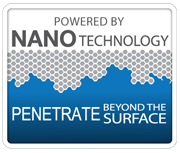How Silver protects against Bacteria and is used in the fight against antibiotic-resistant pathogens.
By Marion Horn, Reporter
The risk of infection is high after an operation. Patients can be infected with antibiotic resistant bacteria. To avoid this, our researchers have studied the use of silver. We have now made effective remedies for this type of infection by using nano technology.
Kings could afford to eat and drink from silverware as an expression of wealth, power and dignity. But that was not the only reason. The precious metal protected the nobility from infections because of its antimicrobial effects. “The antiseptic effect of silver has been known about for over 3000 years. Doctors used silver right up to the end of the 19th century for active treatment of inflammation and infection”, said Dr. Michael Wagener, Project Manager at IFAM.
Our grandparents knew how to appreciate the value of the metal in the household. They put a silver coin in the milk churn to keep the milk fresh for longer.
But with the development of antibiotics the old home remedies were soon forgotten. For nearly 50 years now, antibiotics have been used almost exclusively in the fight against pathogens, bacteria and germs.
Recently however, these pathogens have evolved defense mechanisms resistant to these drugs. Antibiotics can no longer be relied upon to defend us against infection and illness.
“Resistant bacteria can cause life-threatening infections”, warns Dr. Wagener. The bacteria in the body can get contaminated from the use of catheters or scalpels. With dramatic consequences: Experts estimate that in Germany alone over 600,000 patients have become ill from nosocomial infections requiring further treatment in hospital. “Inflammation due to infected catheter kills more people than road accidents” he adds.
To avoid such dangerous bacterial infections, Fraunhofer scientists in cooperation with the company Bio-gate in Nürnberg, a spin-off of the University of Erlangen, have developed new-style Nano-composite medical instruments and components.
These use the anti-microbial properties of silver ions. “We integrate metallic silver into the surfaces of medical components. Coated with these tiny silver particles, the bacteria on the tweezers, catheters or implants have no chance to survive “, states Wagener with enthusiasm. “The nano particles have a diameter of a few millionths of a millimetre. With these, we can finely and evenly coat the surface of the components.”
These then continuously emit positively charged silver ions, making microbes very uncomfortable indeed. The nano particles simultaneously attack bacterial cells in several ways. They destroy the enzymes that transport nutrients for the cell, destabilize the cell membrane, the cytoplasm or the cell wall and disturb the cell division and proliferation process. Bacteria simply cannot survive this concentrated attack. Silver-coated medical devices therefore remain sterile. The efficiency of silver is better than antibiotics. “However, the concentration of silver to be used in the material must be determined exactly. A prosthesis needs a different concentration than a pair of tweezers. We are confident that we can work out the amount of silver particles required for each application”, stressed Wagener.
But how do you determine the right silver concentration?
Bio-Gate has developed sensitive measuring methods for this. By analyzing up to 1000 samples per day, researchers can determine the bacterial growth on various materials such as polymers, plastics, cements, slides, granules, metals, fabrics and coatings. Each application is clinically tested using internationally recognized, patented scientific technology for product development, optimization and quality control. The drive behind this silver technology has continued in recent years particularly in Japan. Numerous hygiene products there are now equipped with silver or silver compounds. There is also a clear trend in the United States towards the use of silver, especially on dressings.
Nanotechnology has opened more varied and sophisticated applications beyond its use in hospitals or medical practices. The employees of Bio-gate GmbH develop materials tailored to the needs of customers. “The antibacterial properties can be used for many products, working in hygiene-intensive sector such as home care, food production, in the household or in cosmetics. For example, when added to textile fibres it can be used as binding for adhesives, in underwear or as material for filters and seals”, said Dr. Peter Steinrücke, Managing Director of Bio-gate, describing the wide range of applications for silver ions.
Clothing made from fibres treated with silver particles can reach new levels of hygiene to help eczema or protect against undesirable microbes. Since the antimicrobial properties will withstand washing, the use of disinfectants in the hospital laundry can be reduced with consequent cost savings.
The objective now is to increase use in private households , where the overuse of disinfectants is damaging the environment. For the use of common disinfectants kills not only dreaded microbes, but can also kill the skin’s own flora causing allergies and can even enter the water supply. The immune system of a healthy person can and must be able to fight back against germs and bacteria cells to remain stable. But too much disinfectant is unhealthy. High sterility is important in public places: swimming pools or in public conveniences Nano silver can give lasting antibacterial protection. In the operating theatre and on medical instruments bacteria and fungi must have no chance of survival. Disinfection is vital. Nano-silver particles in the surface of materials are very effective protection against the threat of germs.



